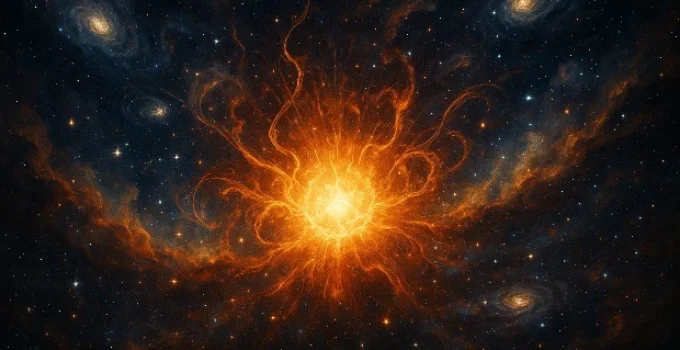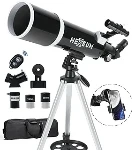How Are Planets Formed?
From clouds of dust to spinning worlds, the birth of planets is one of the universe’s most incredible transformations. In this article, you’ll discover exactly how planets like Earth are made, what role stars play in the process, and how science uncovers the secrets of distant worlds.
🔎 Dive Deeper
- What Is a Protoplanetary Disk?
- How Do Planetesimals Come Together?
- What Happens During Accretion?
- What Role Does the Star Play?
- Why Are There Rocky and Gas Planets?
- How Do Scientists Study Planet Formation?
- 🎯 Final Thoughts
- 📚 References
🌌 What Is a Protoplanetary Disk?
Planets begin inside giant clouds of gas and dust called nebulae. When part of a nebula collapses under its own gravity, it forms a protostar. Around this new star, leftover dust and gas spin into a flat disk called a protoplanetary disk.
This disk is where planets are born. Tiny particles in the disk stick together over millions of years, forming the building blocks of planets.
📊 Interesting Stat: NASA’s ALMA telescope has observed more than 20 protoplanetary disks forming in young star systems!
🪐 How Do Planetesimals Come Together?
In the disk, small particles start to collide and stick. These sticky collisions form larger clumps called planetesimals, which can be as big as mountains or even small moons.
Thanks to gravity, planetesimals pull in more material as they grow. The larger they get, the stronger their pull becomes. Eventually, they become protoplanets—the early versions of planets.
📊 Interesting Stat: Planetesimals can grow from dust to 1 km across in as little as 100,000 years, according to the American Astronomical Society. [AAS]
☄️ What Happens During Accretion?
The process of growth is called accretion. Protoplanets smash into other planetesimals, collecting more mass each time. Some of these collisions are violent, releasing energy that helps melt the young planet, forming a layered interior.
The biggest protoplanets become full-fledged planets. Their gravity can even clear away nearby debris, making their orbits stable.
📊 Interesting Stat: According to the journal Nature, the Earth took 30–40 million years to accrete from smaller ‘planetesimals’.
🌞 What Role Does the Star Play?
The central star plays a huge role. Its light and solar wind—streams of charged particles—can blow away gas from the inner part of the disk. This means that close to the star, planets form mostly from rock and metal, not gas.
Farther out, beyond a point called the frost line, gas and ice stay intact. That’s why the gas giants (like Jupiter and Saturn) form in the outer part of the solar system.
📊 Interesting Stat: The Sun’s solar wind helped shape the entire structure of our solar system over 4.6 billion years ago! [American Museum of Natural History]
🌎 Why Are There Rocky and Gas Planets?
The location in the protoplanetary disk determines what type of planet forms:
- Rocky Planets (Mercury, Venus, Earth, Mars): Form closer to the star where it’s too hot for gas to stay.
- Gas Giants (Jupiter, Saturn): Form farther away where gases like hydrogen and helium can collect.
- Ice Giants (Uranus, Neptune): Form even farther, collecting icy materials and heavier gases.
📊 Interesting Stat: The frost line in our solar system is located around 3 AU (astronomical units) from the Sun—about 280 million miles. [Icarus]
🔭 How Do Scientists Study Planet Formation?
Because we can’t watch planets form in real time, scientists use computer models, telescopes, and meteorite samples. Telescopes like the James Webb Space Telescope and ALMA help astronomers study disks around young stars.
In our solar system, researchers also examine asteroids and comets, which are leftover building blocks from the planet-forming era.
📊 Interesting Stat: The James Webb Telescope has identified water vapor and dust rings in disks as far as 370 light-years away. [NASA]
🎯 Final Thoughts
So, how are planets formed? Planet formation is an awe-inspiring cosmic journey. From tiny dust grains to massive gas giants, every planet in the universe has a story that starts in a cloud of gas. The more we study, the more we learn not only about distant worlds—but about how Earth itself came to be.
📚 References
- 💻 Harvard & Smithsonian Center for Astrophysics. “Epoch Planet Formation Times Twenty.” https://cfa.harvard.edu/news/epoch-planet-formation-times-twenty
- 📝 Carrera, D., & Simon, J. (2024). Dust Growth and Planetesimal Formation in a Self-Gravitating Inflationary Disk. Bulletin of the AAS, 56(4). https://doi.org/10.3847/25c2cfeb.e7ccaa3b
- 📝 Weidenschilling, S. J. “Dust to Planetismals: Settling and Coagulation in the Solar Nebula.” Icarus, vol. 44, no. 1, 1980, pp. 172–189. https://doi.org/10.1016/0019-1035(80)90064-0
- 📝 Wood, Bernard J., et al. “Accretion of the Earth and Segregation of Its Core.” Nature, vol. 441, no. 7095, 2006, pp. 825-833, https://doi.org/10.1038/nature04763. Accessed 17 Jul. 2025.
- 💻 American Museum of Natural History. “Formation of Our Solar System.” https://www.amnh.org/exhibitions/permanent/the-universe/planets/formation-of-our-solar-system
- 📝 A. Morbidelli, B. Bitsch, A. Crida, M. Gounelle, T. Guillot, S. Jacobson, A. Johansen, M. Lambrechts, E. Lega. “Fossilized condensation lines in the Solar System protoplanetary disk.” Icarus. Volume 267. 2016. Pages 368-376. ISSN 0019-1035. https://doi.org/10.1016/j.icarus.2015.11.027
- 💻 NASA. “Webb Detects Water Vapor in Rocky-Planet Forming Zone.” https://www.nasa.gov/centers-and-facilities/goddard/webb-detects-water-vapor-in-rocky-planet-forming-zone/
🎉 Related Products
National Geographic Kids Space Encyclopedia
Blast off into space with the experts at National Geographic to discover everything we know about the universe, including exciting, recent discoveries and amazing brand-new NASA space photography.
Telescope for Adults & Beginner Astronomers
80mm Aperture 600mm Fully Multi-Coated High Transmission Coatings with AZ Mount Tripod Phone Adapter, Carrying Bag, Wireless Control.
📌 Learn More About Planets
- What’s the Order of the Planets (—and Why)?🪐A Solar System Road Map
- What’s the Smallest Planet in the Solar System?🪐Tiny but Mightly in the Cosmic Lineup
- Why Does Mars Look Red? 🪐A Stunning Look at the Science of Rust in Space
- What’s the Largest Planet in the Solar System?🪐Meet the Giant of All Giants
- What’s the Hottest Planet in the Solar System? 🔥 You Might Be Surprised!


